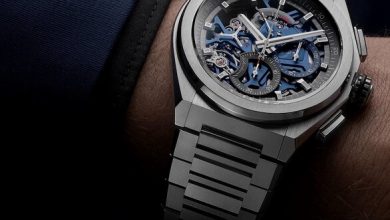Do Your Hamstrings Have Two Jobs to Do?
Are Your Hamstrings Working Double Duty? How to Identify and Address Overuse Issues

Introduction
Hamstrings are among the most important muscle groups in your body, essential for a wide range of movements and activities. Located at the back of your thigh, these muscles play a crucial role in walking, running, and jumping, and they are integral to maintaining proper posture and balance. However, many people are unaware that their hamstrings might be overworking, compensating for other muscles that aren’t doing their job effectively. This phenomenon, often referred to as hamstrings “working double duty,” can lead to muscle imbalances, injury, and decreased performance. In this blog, we’ll explore what it means for your hamstrings to work double duty, the consequences of this condition, and strategies to address and prevent it.
Vilitra 20 is a drug that is frequently recommended to treat erectile dysfunction (ED). It contains Vardenafil. An inability to obtain or sustain an erection strong enough for sexual engagement is known as ED in men. When paired with sexual stimulation, Vilitra 20 works by boosting blood flow to the penis, which helps to facilitate an erection. Kamagra Oral Jelly: Quick relief for ED.
Understanding the Hamstrings
The hamstrings are composed of three muscles: the biceps femoris, semitendinosus, and semimembranosus. These muscles originate from the pelvis and attach to the bones of the lower leg, crossing both the hip and knee joints. Their primary functions include:
- Hip Extension: Moving the thigh backward, which is essential in activities like walking and running.
- Knee Flexion: Bending the knee, which is crucial in movements such as squatting and jumping.
Given their dual role in hip and knee movements, hamstrings are constantly engaged in various physical activities, making them prone to overuse and strain.
The Problem of Double Duty
Hamstrings working double duty means that these muscles are compensating for weaknesses or dysfunctions in other muscle groups. This often occurs due to:
- Weak Glutes: The gluteal muscles are powerful hip extensors. When they are weak or inactive, the hamstrings take on more of the load to extend the hip, leading to overuse.
- Tight Hip Flexors: Tight hip flexors can inhibit the function of the glutes, again forcing the hamstrings to compensate.
- Poor Core Stability: A weak core can affect the alignment and mechanics of the entire lower body, increasing the demand on the hamstrings to maintain balance and stability.
- Improper Movement Patterns: Habitual poor posture or incorrect movement patterns during exercise can lead to the hamstrings being overworked.
Consequences of Overworked Hamstrings
When the hamstrings are forced to work harder than they should, several issues can arise:
- Muscle Imbalances: Overactive hamstrings and underactive glutes can create an imbalance that affects the entire kinetic chain, leading to poor movement mechanics.
- Increased Risk of Injury: Overworked hamstrings are more prone to strains and tears, which can sideline you from physical activities for weeks or even months.
- Reduced Performance: If your hamstrings are doing more work than necessary, they will fatigue faster, reducing your overall athletic performance.
- Chronic Pain: Persistent overuse of the hamstrings can lead to chronic pain in the lower back, hips, and knees.
Identifying Overworked Hamstrings
To determine if your hamstrings are working double duty, look for the following signs:
- Frequent Hamstring Tightness or Soreness: Regular tightness or soreness in the hamstrings, especially after activities, may indicate they are overworked.
- Hamstring Dominance During Exercises: If you feel your hamstrings more than your glutes during exercises like squats, deadlifts, or lunges, your hamstrings may be compensating for weak glutes.
- Lower Back Pain: Overactive hamstrings can contribute to lower back pain due to their attachment to the pelvis and their role in maintaining posture.
- Reduced Hip Mobility: Tight hamstrings can restrict hip mobility, making movements like bending forward or kicking challenging.
Addressing the Issue
To prevent and correct hamstrings working double duty, it’s important to adopt a comprehensive approach that includes strengthening weak muscles, improving flexibility, and enhancing movement patterns. Here are some strategies:
1. Strengthening the Glutes
Since weak glutes are a common cause of overworked hamstrings, incorporating exercises that target the gluteal muscles is essential. Some effective exercises include:
- Glute Bridges: Lie on your back with your knees bent and feet flat on the floor. Lift your hips towards the ceiling, squeezing your glutes at the top.
- Hip Thrusts: Similar to glute bridges but with your upper back supported on a bench or elevated surface, which allows for a greater range of motion.
- Clamshells: Lie on your side with your knees bent and feet together. Open your top knee like a clamshell while keeping your feet touching, engaging the glutes.
- Squats: Focus on proper form and engage your glutes throughout the movement.
2. Improving Hip Flexor Flexibility
Tight hip flexors can inhibit glute function, so incorporating stretching and mobility work for these muscles is important. Effective stretches include:
- Hip Flexor Stretch: Kneel on one knee with the other foot in front. Push your hips forward gently until you feel a stretch in the front of the hip.
- Pigeon Pose: From a plank position, bring one knee forward and place it behind your wrist while extending the other leg back. Lower your hips towards the floor to stretch the hip flexors.
3. Enhancing Core Stability
A strong core provides a stable base for all movements, reducing the strain on the hamstrings. Core exercises to include are:
- Planks: Hold a plank position, keeping your body in a straight line from head to heels.
- Dead Bugs: Lie on your back with your arms extended towards the ceiling and your knees bent at 90 degrees. Lower one arm and the opposite leg towards the floor while keeping your back flat.
- Bird Dogs: From a quadruped position, extend one arm and the opposite leg while keeping your core engaged.
4. Correcting Movement Patterns
Learning proper movement patterns and maintaining good posture during activities can prevent overuse of the hamstrings. Consider the following tips:
- Focus on Hip Hinge: When bending forward, hinge at the hips rather than rounding the lower back. This movement pattern engages the glutes and reduces strain on the hamstrings.
- Engage the Glutes: During exercises like squats and deadlifts, consciously engage the glutes to ensure they are doing their share of the work.
- Seek Professional Guidance: Working with a physical therapist or certified trainer can help identify and correct faulty movement patterns.
Stretching and Recovery
To maintain healthy hamstrings, it’s important to incorporate regular stretching and recovery techniques into your routine. Consider the following:
- Dynamic Stretching: Perform dynamic stretches before workouts to prepare the muscles for activity. Leg swings, walking lunges, and high knees are effective options.
- Static Stretching: After workouts, incorporate static stretching to improve flexibility and prevent tightness. Hold stretches for 30 seconds to a minute.
- Foam Rolling: Use a foam roller to release tension in the hamstrings and surrounding muscles. Roll slowly over the muscles, pausing on any tight spots.
- Rest and Recovery: Allow adequate rest between intense workouts to prevent overuse and give the hamstrings time to recover.
Case Study: Athlete’s Hamstring Rehabilitation
To illustrate the importance of addressing hamstrings working double duty, consider the case of an athlete who experienced chronic hamstring issues due to overuse. Despite regular training, the athlete struggled with tightness and frequent strains. After a thorough assessment, it was determined that weak glutes and poor hip mobility were contributing factors.
A comprehensive rehabilitation program was implemented, focusing on:
- Glute Activation Exercises: The athlete incorporated daily glute activation exercises, such as glute bridges and clamshells, to strengthen the gluteal muscles.
- Hip Flexor Stretching: Regular hip flexor stretches were performed to improve flexibility and reduce inhibition of the glutes.
- Core Stability Work: Core exercises, including planks and bird dogs, were added to enhance overall stability.
- Movement Pattern Correction: The athlete received coaching on proper movement patterns during exercises, with an emphasis on hip hinging and glute engagement.
Over the course of several months, the athlete noticed significant improvements. Hamstring tightness and pain decreased, and performance in activities like running and jumping improved. This case highlights the effectiveness of a targeted approach to address hamstrings working double duty.
Conclusion
Hamstrings working double duty is a common issue that can lead to muscle imbalances, injury, and decreased performance. By understanding the causes and consequences of overworked hamstrings, you can take proactive steps to address and prevent this condition. Strengthening weak muscles, improving flexibility, enhancing core stability, and correcting movement patterns are essential strategies to ensure your hamstrings function optimally. Whether you’re an athlete or someone who engages in regular physical activity, paying attention to your hamstrings and the muscles around them will contribute to better performance, reduced risk of injury, and overall well-being.
By incorporating the exercises and techniques outlined in this blog, you can create a balanced and effective fitness routine that supports healthy hamstrings and enhances your overall physical health. Remember, a proactive approach to muscle care and injury prevention is key to long-term success in any fitness journey.




